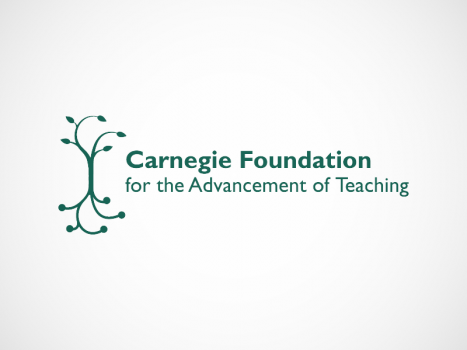Education Has Much to Learn From Healthcare Reform Efforts. Reflections on The Best Practice: Learning from the Emergence of Quality Improvement in Healthcare
In December 2008, Knowledge Alliance President Jim Kohlmoos invited a group of people to Snowbird, Utah, to join a conversation around a question the Alliance had been grappling with for a long time: could education research and development be redesigned to transform learning? Carnegie was represented because the redesigned approach to R&D that appealed to Kohlmoos and members of the Knowledge Alliance board was largely informed by a paper written by Carnegie President Tony Bryk and former Carnegie Board member Louis Gomez, now at the University of Pittsburgh. It was also the approach Bryk was using for Carnegie’s new program of work since he took the job as president of the Foundation a few months earlier in September.
It was an aha! moment for Bryk and his colleagues
Don Berwick, CEO of the Institute for Healthcare Improvement, was one of the presenters at this gathering. In an hour presentation, Berwick detailed IHI’s groundbreaking performance improvement work, and described how the organization started and what it had accomplished. It was an aha! moment for Bryk and his colleagues, including Gomez who was also in the room. Here was someone doing similar work on wide scale quality improvement in health care who had been toiling the vineyards since 1988, and was having enormous success in reducing error rates, improving diagnoses and treatments, and simultaneously making clinics more cost effective.
What has now become required reading for Carnegie staffers is The Best Practice: How the New Quality Movement is Transforming Medicine by Charles Kenney (Public Affairs 2008). The book describes how Berwick and colleagues established IHI and looks back at the work that influenced Berwick, and it profiles the IHI “Birthday Club” (founders Berwick, Gene Nelson and Paul Batalden) and unpacks the challenges they faced as they began this groundbreaking work. If the reader inserts “student” for “patient,” “teacher” for “doctor,” and “school” for “hospital,” one could easily see IHI’s work as providing a blueprint for using the science of performance improvement to improve education; both face remarkably similar challenges.
Two of IHI’s audacious goals are: (1) no needless deaths and (2) no one left out.
Two of IHI’s audacious goals are: (1) no needless deaths and (2) no one left out. This sounds a lot like a recent popular catch phrase of school reform—no child left behind— without the unfortunate punitive underpinnings. Indeed, a major focus in Berwick’s work, heavily influenced by the quality improvement movement coalesced under W. Edwards Deming’s work on continuous quality improvement in Japanese industry, was that the focus should be on process, there should be no affixing blame, and that well-designed systems and processes were the key rather than individuals working in isolation. In other words, what was needed was to create a community of learning, not a community of blame (and blame avoidance).
Supporting this work was the belief that in order to improve quality in health care, the movement would have to be organized by some key principles: the mandatory measurement and reporting of results, that ideas would be tested and people would learn by doing, that everyone involved in patient care would be engaged and empowered to act, and that new approaches would be data-driven and evidence based.
Expectations for education are at an all-time high, with the projection that for the first time in history educators will enable all students to succeed at a high level.
Bryk and Gomez had strikingly similar ideas about education. In the Ruminations paper that became a transformative document for the Knowledge Alliance, they acknowledged that expectations for education are at an all-time high, with the projection that for the first time in history educators will enable all students to succeed at a high level. U.S. education statistics and evidence of schools not serving students well were just as alarming as the health care stats Berwick cited when he began his work.
The value-added for Carnegie in Berwick’s work, so ably chronicled in the Kenney book, is that Berwick’s process, through trial and error and much resulting success, is not a work in progress, but it is now a work entrenched. IHI selects a widespread clinical problem in healthcare, convenes leading experts around it, invites hospitals and physician groups to join in the learning and creates a synergy of experts working with clinicians to solve problems.
Carnegie is selecting high-leverage problems of practice in education, convening leading experts around them, inviting representatives from schools and colleges and organizations grappling with the same high leverage problems (as well as designers, funders and interested others), and creating a synergy of knowledgeable experts able to work respectfully with school practitioners on job-imbedded issues.
Berwick has taken IHI’s work in healthcare to scale, something rarely done in education. Their key principles and successful methods of empowering people at every level of the process are part of a developmental process that Carnegie and others can learn from.
January 13, 2010
Clay Shirky evaluates the effect of the Internet on modern group dynamics.
April 1, 2010
This interview with Louis M. Gomez, a Senior Partner at Carnegie, and details the Knowledge Alliance, a mix of doers and thinkers with aspirations to improve education for all students.





